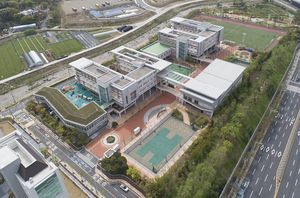North Korea has launched trash-filled balloons into South Korea for a second consecutive day, marking the 26th such provocation since the campaign began on May 28.
According to South Korea’s Joint Chiefs of Staff (JCS), North Korea deployed another balloon early Tuesday morning.

In a text message sent to the Ministry of National Defense press corps around 5:09 a.m., the JCS warned that the balloons could drift toward northern Gyeonggi Province and the greater Seoul area due to current wind patterns. Citizens were urged to avoid touching debris and report findings to the nearest military base or police station.
Meanwhile, on the same day, an exclusive report from Hankook Ilbo revealed that companies, academia, and research institutes will start the project on developing the UAV for aerial collection to prevent North Korea launched garbage balloons.
According to the report, the UAV for aerial collection system deploys drone fleets when North Korea launches trash balloons, pre-detects the potential chemical and biological threats, and collects them mid-air for disposal.
The media outlet noted that defense industry sources indicated domestic companies, academia, and research institutions plan to propose a policy to the government next month for research on this initiative.
They also hinted at possibly progressing the project with a special budget formulation next year since balloons pose an immediate terror threat.
The drones proposed for development will consist of two types: multicopters with multiple rotating propellers and vertical take-off and landing vehicles. The multicopters will detect and collect the balloons, while the vertical take-off vehicles will be dispatched to areas impacted by balloon explosions for rapid analysis.
Initial estimates suggest the research and development of the UAV system would require an annual budget of approximately 10 billion won (US$ 7.5 million) over three years. While some critics question the time frame, noting that the threat is ongoing, researchers explained that drones capable of intercepting and carrying heavy payloads require significant technological advancements and the creation of dedicated testing sites.










Most Commented